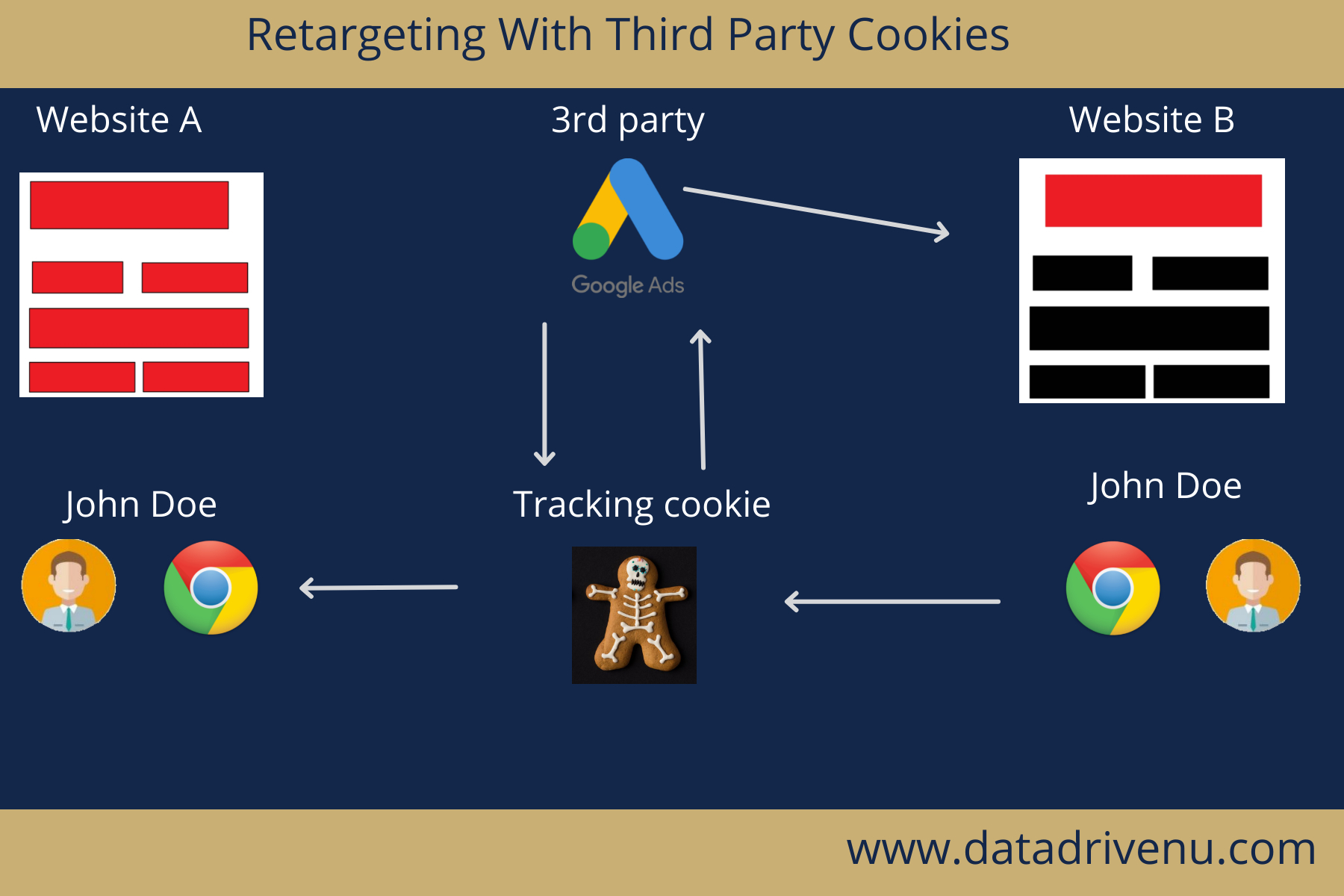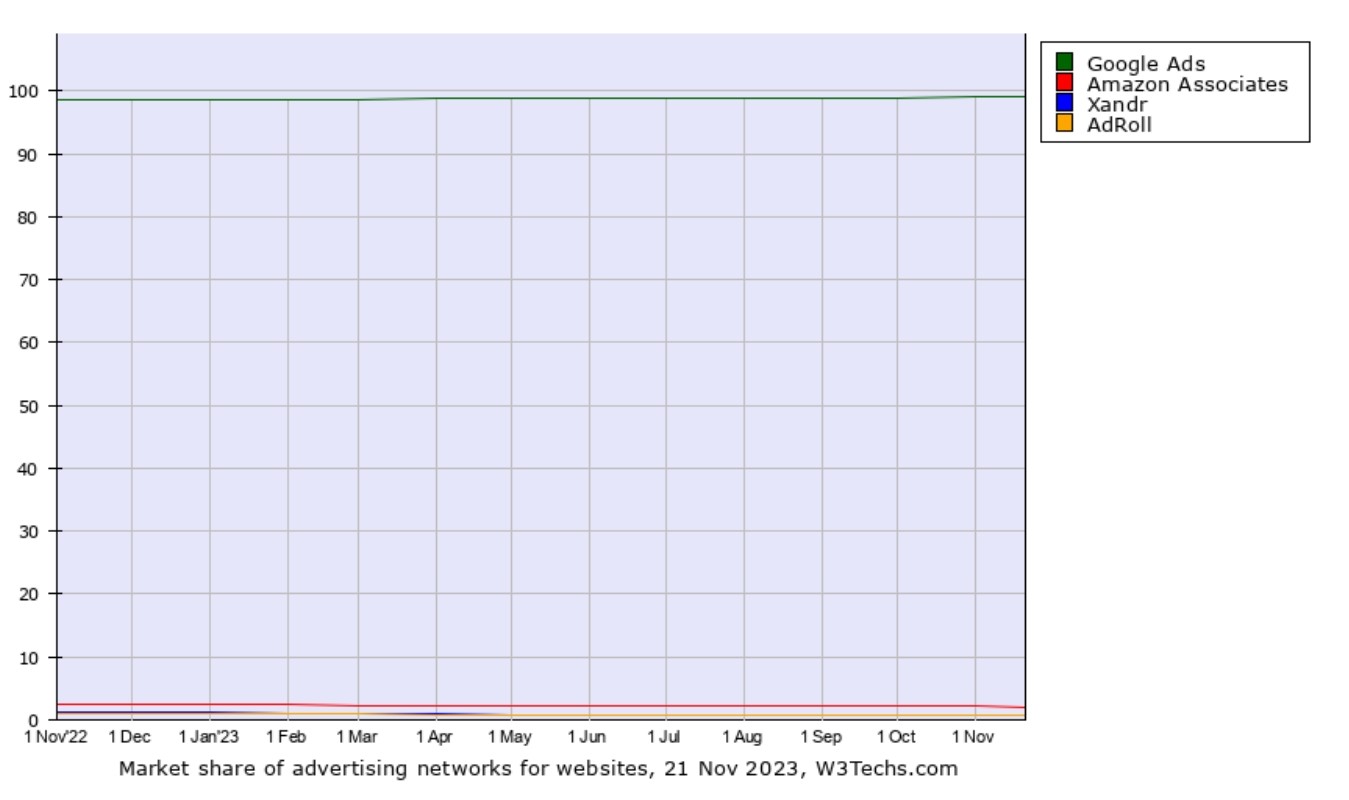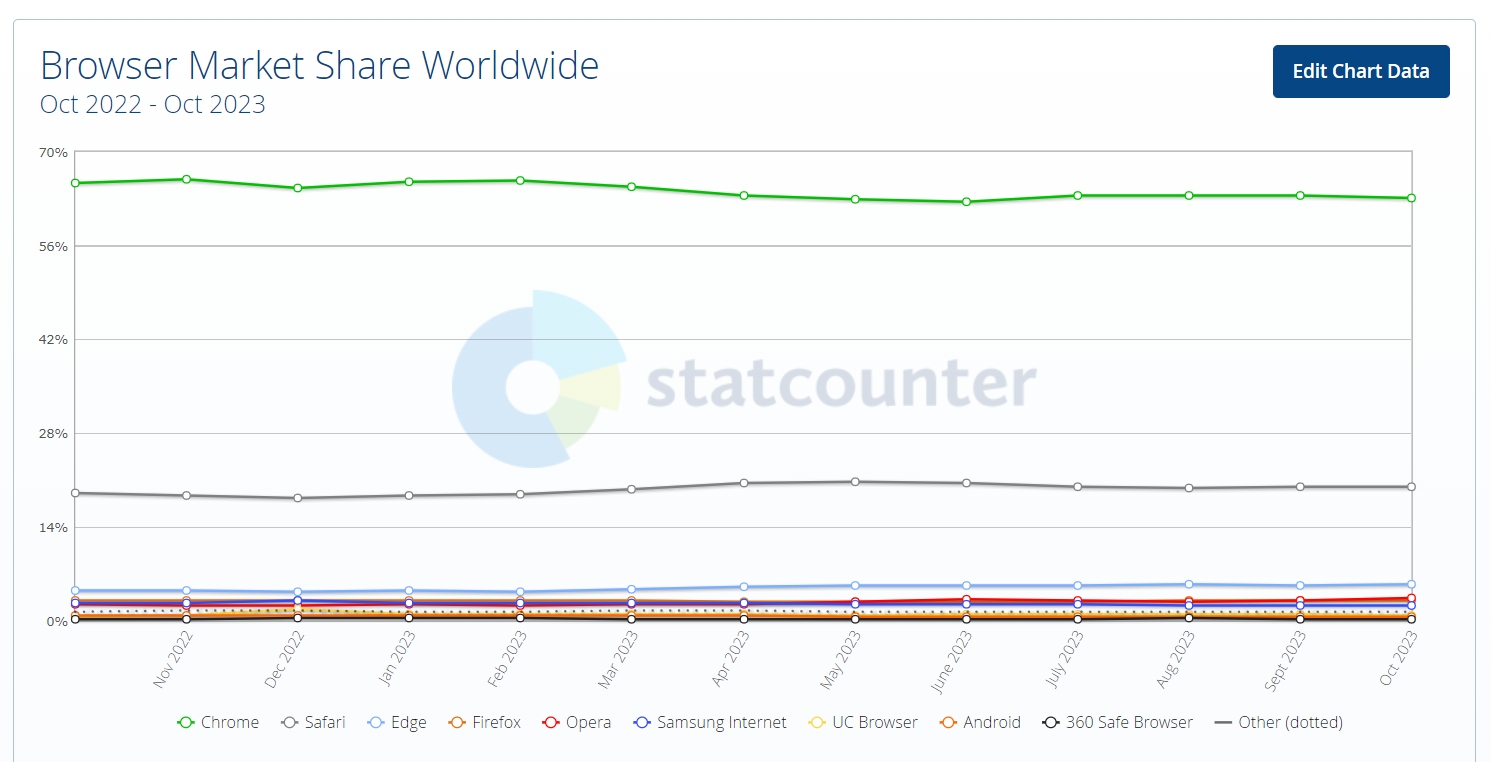Retargeting without cookies is the next big challenge for marketers. Google will kill them off in the course of 2024, and that will change the digital marketing landscape forever. And to be honest, also for the better. So, how do you prepare your business for a cookieless world? Let’s find out…
Key Takeaways
- Retargeting is an effective marketing strategy to drive visitors back to a site, web shop or app.
- Retargeting has relied on cookie technology for decades.
- Third party cookies have a bad reputation and that’s why some browsers and iOS 14 block them by default.
- In 2024, Google will test its new technology to replace cookies for retargeting campaigns.
- In a privacy-centric world, it’s smart to focus on first-party data.
- Our handbook on privacy outlines how to become a trustworthy privacy focused business or organization. So, make sure you grab your free copy.
What is retargeting, again?
Retargeting is an online marketing strategy to drive visitors back to a website, online shop or app by showing ads on other sites. For decades, this strategy has proven to be successful for advertising platforms, advertisers and publishers.

Marketers love retargeting because it is powerful when done right. Typical successful retargeting campaigns do something similar as in these examples:
- John Doe watches a product on a web shop, or even adds it to the basket, but then leaves the site. On another site, John sees an ad with the same product.
- John Doe visits a business site. He leaves the site and a week later, he sees an ad for the company that highlights something he had not seen during his first visit.
Retargeting has always been an effective and low-cost marketing strategy to remind people of a site, a brand or a product.
But retargeting also had one big problem: it used creepy cookies to follow people online.
Cookies have always played a key role in retargeting campaigns because they allow advertising platforms to follow users online.
Note that there is a difference between first and third party cookies.
Retargeting uses 3rd party cookies as you can see in the illustration below.

People are more likely to buy from brands they are familiar with in some way or another. Retargeting ads were a cheap solution to gradually build trust with strangers who had visited a site before.
That worked well for years. However, right now, everybody and their cat agrees that following someone online across sites is sneaky.
The pressure from consumers, privacy advocates and privacy laws like the GDPR, CCPA and AAp is high and something had to change.
After years of stalling (and increased pressure), Google decided to kill off third-party cookies.
And that decision reshapes the digital marketing landscape as we have known it, for way too long.
Yes, for a big part retargeting cookies are already dead.
Browsers like Brave, Firefox and Safari already block retargeting cookies. In 2024, Google will also stop serving third party cookies through its Chrome browser.
There are two phase-out periods.
- In the first quarter of 2024, the Chrome browser will automatically block third party cookies for 1% of its global users.
- In the second half of 2024, this will be for all Chrome users.
You can follow the timeline on the PrivacySandbox. Today it looks like this:

Google has foreseen a 6 month transition period. Data from the 1% Chrome users should be sufficient to test out its solution that will replace third-party cookies.
Gentle as they are, this also gives everybody else, including you, the opportunity to adapt to a cookieless world.
On this site, Google explains how developers can prepare for phasing out third-party cookies.
Google’s bald move will not automatically end the era of third-party cookies. But then again, they are a vital player in the retargeting industry.
According to W3Techs, the Google Ads Network takes a 99% market share of advertising networks for websites.

The Google Display Network (GDN) contains 2 million sites, videos and apps. Those reach about 90% of the internet users worldwide according to Google.
According to Statcounter, the Chrome browser has a global market share of more than 60% in 2023.

You get it.
The moment Google stops using third-party cookies, everything will change for marketers and their beloved retargeting strategy.
The question is then, what’s next?
No. Advertising platforms, like Google Ads, are either working hard on an alternative, or already have one in place.
At this moment, there is still a lot unclear about which technology will replace tracking cookies. Google will definitely take its time to phase out tracking cookies for retargeting purposes.
Despite all the data they have, they need data from real people, advertisers and publishers.
- How will surfers respond to ads that are shown based on their interest and not on a visit to one particular site?
- Will the tech be able to compose a user profile that can bring in money and at the same time, doesn’t intrude privacy?
- Will the cookie replacing technology be sufficient for governments, or will the lawsuits keep piling up?
But rest assured, Google is close to an alternative for tracking cookies. In 2020 they announced the following
Once […] we have developed the tools to mitigate workarounds, we plan to phase out support for third-party cookies in Chrome.
That time is now and Google has two options
- Delay the phasing out of cookies if things go south.
- Launch a solid alternative for the infamous tracking cookies.
Time will tell.
The easiest way to retarget without cookies is to rely on advertising platforms and the options they have, or will implement in 2024.
You can, for instance, use the Facebook Conversions API to send data of what visitors do, directly to Facebook. No third party cookie needed and yet, you can retarget visitors with ads.
As for the Google Ads, this will probably be Topics. I deliberately say “probably”. Other solutions, like TURTLEDOVE and FLoC, also were once believed to be the best solutions for showing ads while respecting the privacy of the people of the internet.
Retargeting is not going to disappear with cookies. But that doesn’t mean that you have to stick to old marketing habits and strategies…
The downfall of tracking cookies forces businesses to rethink their marketing strategies. But isn’t marketing all about creativity?
Now is the best time to be proactive and switch to first-party data marketing. To do so, you need to collect data directly from customers.
That is a mindshift similar to what happened when Google replaced Universal Analytics with Google Analytics 4.
Like the end of cookies, it also confused marketers and data analysts. But in the end, GA4 is a huge step towards a privacy focused business because it can track users without cookies.
Since you can link GA4 to BigQuery, first-party data is no longer an exclusive right for enterprises with deep pockets.
If you haven’t prepared your online business for a cookieless world, now is a perfect time. Retargeting site visitors with tracking cookies will end in 2024.
Here are some actionable things you can do to prepare for that sunset.
- Download our privacy handbook. It sums up all you need to know to become a privacy led organization.
- Check your current advertising platform. Do they already offer solutions to retarget without cookies?
- Make sure you know at least the ROI of your current retargeting campaigns. An even better idea is to export all the data so you can compare the results when cookies are gone forever.
- Question, based on data, whether retargeting is actually worth it for your business?
- Switch from relying on third party cookies to becoming a first party data business.
- Scan your website for cookies. There may be services that use third-party cookies without your knowledge. If those cookies disappear forever, they may break your site.
- Check in your web analytics tool how many visitors are already using a browser that blocks third party cookies.
This is a small list of things you can do to prepare for a cookieless internet.
A ton of questions about cookies retargeting remain unanswered at this moment, but what follows is certain.
There are a lot of privacy rules around the globe that have strict rules to protect the privacy of online users, like the GDPR in the EU, the CCPA in California, and APP in Australia. The rules differ per region, but even if you are not obliged to ask for consent, it is a smart way to do it and show respect for your visitors.
For the GDPR, a consent banner is obligatory.
What is the difference between remarketing and retargeting?
Even specialists can confuse remarketing with retargeting and that’s normal. They are both marketing strategies to bring visitors back to a site or web shop. The main difference is that remarketing targets existing customers. Retargeting on the other hand, is trying to drive people back that are not customers.
In 2024, Google will stop serving third party cookies through its Chrome browser. This will happen in two phases. In the first quarter of 2024, the Chrome browser will automatically block third party cookies for 1% of its global users. In the second half of 2024, this will be for all Chrome users.
Is retargeting the only way to market your site?
No. Retargeting is a powerful strategy but it is also a deliberate choice. Retargeting is only one possible marketing strategy. Besides, to drive visitors back, you first need to attract them to your site. SEO, social media, a YouTube channel and traditional paid advertising can help with that.
A more sustainable approach can be to get visitors on your mailing lists, or make them follow you on social media.
See you again?
That was it. Maybe you will come across a retargeting ad from DDU when you visit another website.
Maybe, you will click it and come back.
A smarter thing is to join our free newsletter for data driven marketers and stay on top of small and huge changes in the exciting data-driven marketing industry.
